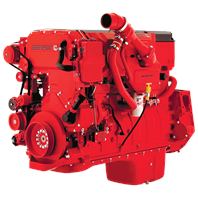 Today the majority of diesel powered motorhomes are equipped with a turbocharger. This device not only increases the horse power of the engine, it also maintains most of that power at high elevations. This is accomplished by utilizing the energy of the rapidly expanding exhaust gases to propel a turbine. The shaft of this turbine in turn drives a rotary turbine compressor that forces air into the engine intake manifold. To make this work properly, two other important components are required. They are, a me
Today the majority of diesel powered motorhomes are equipped with a turbocharger. This device not only increases the horse power of the engine, it also maintains most of that power at high elevations. This is accomplished by utilizing the energy of the rapidly expanding exhaust gases to propel a turbine. The shaft of this turbine in turn drives a rotary turbine compressor that forces air into the engine intake manifold. To make this work properly, two other important components are required. They are, a me thod of cooling the compressed air entering the intake manifold, and a safety to prevent over boosting.
thod of cooling the compressed air entering the intake manifold, and a safety to prevent over boosting.
The cooling of the higher pressure intake air is piped through an air cooled heat exchanger. This is referred to as the charge air cooler. It is incorrect to refer to this as an intercooler. That term is exactly what it implies, a cooler between two compressors, or twin turbochargers. These are not normally used in RV applications.
The turbo boost air is any air pressure above that of the atmosphere. While it is beneficial to increase power by having a higher boost pressure, it must remain within the limitations of the engine specifications. Over boost can damage the engine, create overheating, and can also cause combustion chamber pre-detonation. This issue is handled by a wastegate that by-passes the exhaust gases to regulate the output shaft speed. The wastegate has been replaced on many designs by the variable-geometry nozzle. This design controls the speed by varying the nozzle opening precisely.
The only weak point of the turbocharger is a slight lag when heavy throttle is applied. This lag is the time it takes for the turbine to “spool up”, or catch up to the engine demands. This is reduced somewhat with the variable-nozzle design.
So, how do we maintain a healthy turbocharger? Well, except for regular oil changes, it is mostly in the operation. Turbochargers rotate at up to 250,000 RPM. More commonly in RV type rigs, 130,000 to 180,000 RPM are experienced with temperatures running around 1,400 degrees F. Basically, the shaft bearing runs on a film of oil. Caution must be observed not to stop the engine at any speed other than a dead slow idle to prevent non-lubricated turbine run-on. The turbo must also be allowed to cool prior to shutdown, generally 2 or 3 minutes. Failure to do so may “Coke” the bearing (burnt deposits).
So, for those that use the Smart Wheel cruise control idle override, be sure to deactivate it and let the engine idle down prior to shut-down.
The risks of “Choking” a turbo, by not allowing it to cool prior to stopping the engine, can be substantially reduced by using synthetic oil. This is not needed, however, if you follow the correct shut-down procedures.
There are some new technologies in turbochargers on the horizon. The E-Turbo is currently under development. Watch for it in the future.





